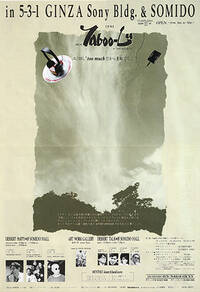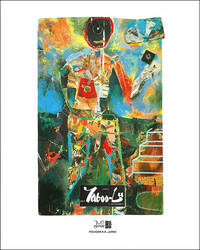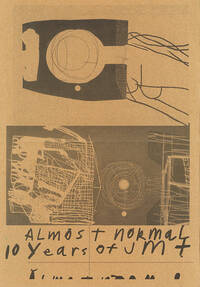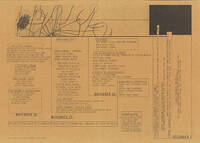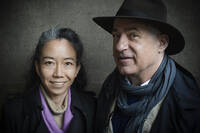It is incredibly difficult and inappropriate for us to put things about Sound Art into words. We are neither authors nor philosophers, nor art scholars or musicologists or teachers. Actually, we want to let sound art speak.
Certain things can only be expressed through art, otherwise there is no need to create these works. This is our mission. With Neue Klangkunst we want to make space in which sounds merge with other arts and media to create a work of art.
Sound Art is one of the most important new art forms. Leading museums around the world, the Venice Biennale, the Whitney Biennale, the Documenta in Kassel, and numerous exhibition spaces and galleries are opening up to Sound Art to an ever-increasing extent. It is impossible to imagine today's art scene without this art form. Sound Art needs its own spaces to open up new spaces.
We are convinced that there is no objectivity in writing about art, or in judging it. Anyone who comments on and evaluates works of art is — consciously or unconsciously — dependent on their own psyche and thus subjective perception.
Seen in this light, the only thing that ultimately remains is to trust in the own conviction and experience. This trust is based partly on intuition and partly on perceptions and knowledge accumulated over the years.
— Mariko Takahashi and Stefan Winter
Since the early nineties, Mariko Takahashi and Stefan Winter have been working together to create recorded works, performances, sound-, film- and room-installations.
In 1989 Mariko Takahashi started working for Polydor K.K., a major label of the music industry in Tokyo. In the distribution network of Polydor K.K. she discovered JMT (Jazz Music Today), a music label founded by Stefan Winter in 1985, dedicated to recording works of the emerging New York M-Base and downtown scene.
Stefan Winter produced debut albums on JMT by Uri Caine, Steve Coleman, Greg Osby, Herb Robertson, Hank Roberts, Gary Thomas, Cassandra Wilson, among others, but also concept albums by Paul Motian and recorded works by Tim Berne in distinctive artworks by Steve Byram with photographs by Robert Lewis, but also works by Thom Argauer, an artist and close friend of Stefan Winter. The special nature of JMT, to discover and document currents of the music avant-garde beyond the mainstream and to work with contemporary visual artists, prompted Mariko Takahashi to initiate a multidisciplinary festival to present the artistic environment of JMT in Japan. Her boss Hiroyuki Takei and his team agreed to her proposal to initiate a special art show with live performance.
In the fall of 1989, Mariko Takahashi and Stefan Winter met for the first time in Tokyo to prepare for this event. From the first moment on, an intensive collaboration developed. With team colleagues from Polydor K.K., Mariko Takahashi and Stefan Winter discussed music and art and created the concept for this special exhibition and concert series including artist talks. The first joint work with the title "Taboo-Lu" ("Breaking Taboos") were thus created. In the spring of 1991 "Taboo-Lu" took place in the Ginza Sony Building in the middle of Tokyo.
After this event Mariko Takahashi and Stefan Winter were geographically separated again. Mariko Takahashi worked at Polydor in Tokyo as product manager of Motown and A&M with Boyz II Men, Sheryl Crow, Steve Wonder... Stefan Winter led JMT, commuted between Munich and New York and produced music of the contemporary jazz scene.
In 1995, the New York City based Knitting Factory hosted a festival entitled "Almost Normal" for the tenth anniversary of JMT. Steve Byram created room-filling frescoes in cooperation with the artists Mark Kinsley, Robert Lewis, Warren Linn, Jonathon Rosen and Karen Greenberg. Herb Robertson presented Stefan Winter's "The Little Trumpet", groups directed by Django Bates, Tim Berne, Robin Eubanks, Mark Ledford and Gary Thomas performed, Marc Ducret presented a solo program, Susanna Schönberg installed video art and Uri Caine persented "The Gustav Mahler Document" for the first time with the video installation „Detaching from the World", which Stefan Winter produced for Polyor K.K. in Japan. Journalists from all over Europe, Japan and the USA attended this event. It was a very exciting and emotional festival, because on the second day of the program Polygram USA announced that they stop distributing JMT, because there was no more room for this niche program. On the same day, on the stage of the Knitting Factory, Stefan Winter announced in one breath the end of JMT and the start of the Music Edition Winter & Winter.
Mariko Takahashi and Stefan Winter had an intense long-distance relationship, exchanging music, books on art, exhibition announcements and museum catalogs almost daily. For productions and meetings they met in Venice, New York City, Buenos Aires, Briosco near Milano, Vienna, Munich and again and again in Tokyo. They visited galleries, museums, art and music festivals, concerts, cinemas, clubs, opera, performance, dance and ballet performances, installations, artists' ateliers and recording studios. The shared experiences and adventures flowed into their artistic work. Mariko Takahashi and Stefan Winter established the Music Edition Winter & Winter, a label that accepts no categorization in classical, jazz, new music and folklore, but creates new worlds of sound from the most diverse musical styles.
In 1998 Mariko Takahashi and Stefan Winter decided to live and work together in Munich. They developed, realized and staged recorded works with such diverse artists as Teodoro Anzellotti, Hans Abrahamsen, Noël Akchoté, Uri Caine, Mauricio Kagel, Paul Motian, Barbara Sukowa, Fumio Yasuda and Aarón Zapico with Forma Antiqva. For the visual design of their publications they enlisted artists such as Nobuyoshi Araki, Georg Baselitz, Marcel von Eeden, Mark Lammert, Yoshitomo Nara, Jerry Zeniuk and the graphic artist and illustrator Günter Mattei.
Günter Mattei accompanies Mariko Takahashi and Stefan Winter on trips around the world. Takahashi and Winter captured noises, tones and sounds with the microphone and created musical travel diaries, audio films ("Cinema for closed eyes", as the weekly magazine "Der Spiegel" titled) from the found objects.
In addition to the recorded works for Winter & Winter, Takahashi and Winter created stagings, room installations, sound sculptures, film and sound art works.
The examination of sound art is increasingly moved to the center of their work.
In 2019 Mariko Takahashi and Stefan Winter founded the non-profit organization Neue Klangkunst,
to present works of this art form to the public,
to attract exhibition spaces and museums to sound art,
to realize and present recording works, room installations and interactive artworks,
to create sound in a variety of artistic styles for which the traditional vocabulary of music, recording, opera, theater and visual arts is no longer sufficient,
to create sound art for all age groups, including children,
to initiate works that are not bound by rules, because when terms such as music or visual art are used, this implies a certain tradition and doctrine and the consequent acceptance of this tradition and doctrine, the artist is shown limits that prevent him from making art that goes beyond these limits,
to abolish the academic separation of forms of expression,
to allow sound art that does not follow any tradition, but respects tradition and draws from tradition,
to create contexts of meaning between invisible and visible art,
in order to link noise, sound, tones and their echoes with other arts and media to create a work of art,
to give space to the narrative power of sounds, to open up new spaces,
to create living sound pictures of noise, tone, space, time, movement and form,
to liberate and emancipate noise, tones and sound,
to seduce the ears to see and to create works that even people with little or no visual perception can experience,
to develop analog and digital sound art works,
to awaken the desire for sound,
to initiate a sound art museum.
